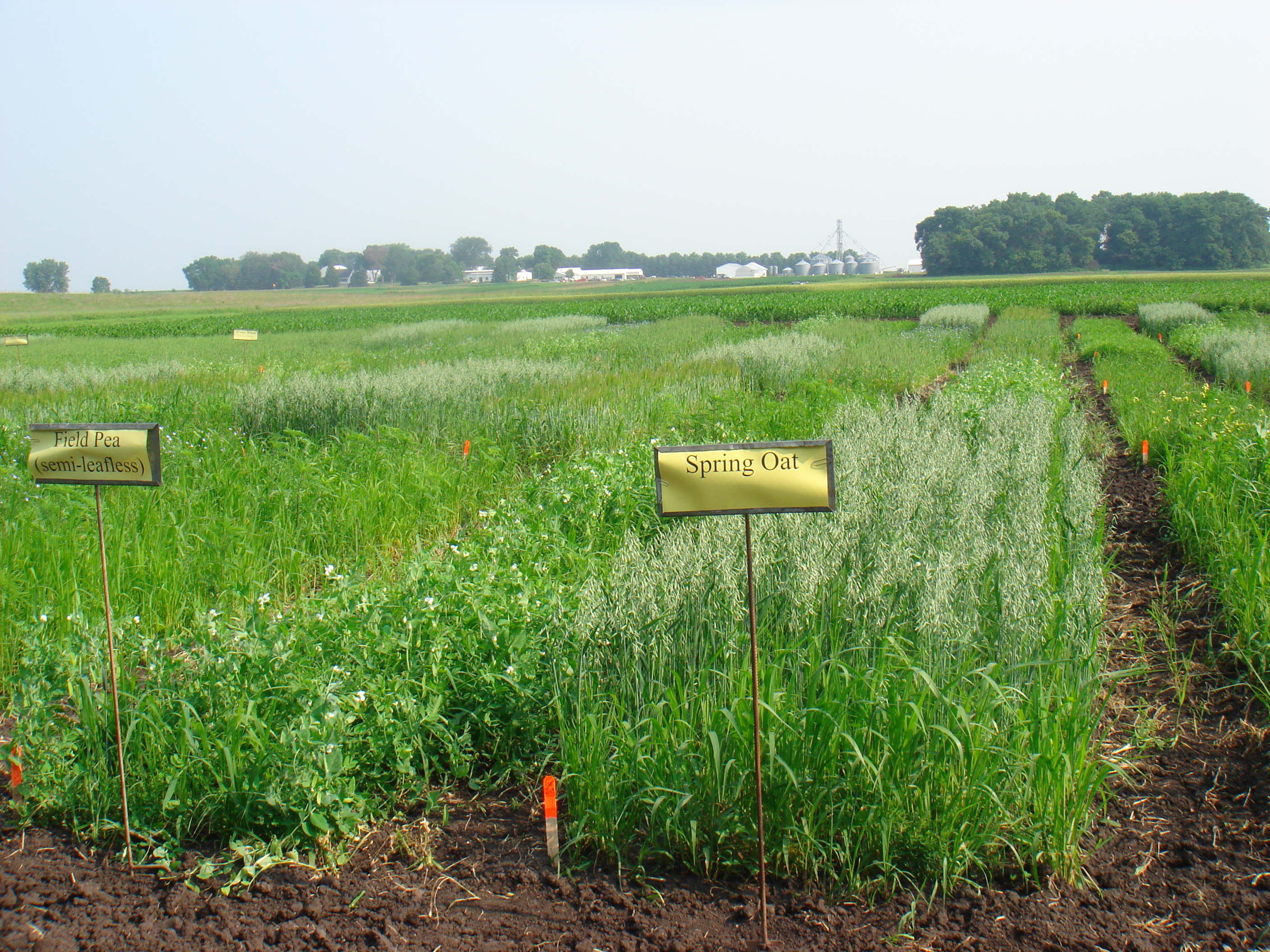eOrganic author:
Jim Riddle, University of Minnesota
Cover crop plots at University of Minnesota. Photo credit Jim Riddle, University of Minnesota.
While most organic research can be undertaken in full compliance with NOP requirements, NOP section § 205.290(a)(3) allows the Administrator of USDA’s Agricultural Marketing Service (AMS) to establish temporary variances from certain regulatory provisions.
Temporary variances may be established for:
- Natural disasters declared by the Secretary of Agriculture;
- Damage caused by drought, wind, flood, hail, tornado, earthquake, excessive moisture, fire, or other business interruption; and
- Practices used for the purpose of conducting research or trials of techniques, varieties, or ingredients used in organic production or handling.
In order to receive a temporary research variance, a researcher must make a request to the certifying agent. The certifying agent reviews the request and may recommend to the AMS that the temporary variance be granted. The AMS Administrator approves the variance and sets a period of time, under which the variance is allowed. The Administrator may also grant an extension.
NOP §205.290(e) states that, “Temporary variances will not be granted for any practice, material, or procedure prohibited under §205.105.” This means that the following cannot be used under a temporary variance:
- Synthetic substances that do not appear on the National List of Allowed and Prohibited Substances (§205.601, §205.603, or §205.605);
- Prohibited natural substances that appear on §205.602 or §205.604;
- Excluded methods;
- Ionizing radiation; or
- Sewage sludge.
“Excluded methods,” which may not be used in organic production or handling and are not eligible for temporary variances, are defined under the NOP as, “a variety of methods used to genetically modify organisms or influence their growth and development by means that are not possible under natural conditions or processes and are not considered compatible with organic production. Such methods include cell fusion, microencapsulation and macroencapsulation, and recombinant DNA technology (including gene deletion, gene doubling, introducing a foreign gene, and changing the positions of genes when achieved by recombinant DNA technology). Such methods do not include the use of traditional breeding, conjugation, fermentation, hybridization, in vitro fertilization, or tissue culture.”
The following NOP sections are eligible for consideration, when research and other temporary variances are requested:
- Soil fertility and crop nutrient practices - §205.203;
- Seed and planting stock practices - §205.204;
- Crop rotation systems - §205.205;
- Pest, weed, and disease management - §205.206;
- Wild crop harvesting standard - §205.207;
- Origin of livestock, feed, health care, and living conditions - §205.236-239;
- Handling (processing) requirements - §205.270;
- Facility pest management - §205.271; and
- Prevention of commingling and contact w/ prohibited substances - §205.272.
In order to be certified with a temporary variance, certain sections of the NOP regulation remain mandatory. These include:
- Recordkeeping Requirements - §205.103;
- Maintain or Improve the Natural Resources of the Operation - §205.200;
- Organic System Plan - §205.201;
- No Use of Prohibited Substances - §205.202(a);
- No Application of a Prohibited Substance 3 Years Prior to Harvest - §205.202(b);
- Distinct, Defined Boundaries and Buffer Zones - §205.202(c);
- Labeling Requirements - §205.300-311; and
- Certification Procedures - §205.400-406.
Examples of Potential Variances
Examples of possible research variances might include the following:
- While §205.204 requires the use of organic seed, when commercially available, a researcher could request a variance in order to use untreated, non-organic foundation seed for seed breeding research, without first attempting to source organic seed in equivalent varieties. (Fungicide treatments and genetically engineered varieties cannot be used, since their use is prohibited under §205.105.)
- Section 205.203(c)(2) establishes certain requirements for the production of compost. A researcher could request a variance to produce compost on a certified organic research station through other methods or parameters than those specified in §205.203(c)(2).
- §205.205 requires the use of soil-building crop rotations. For the purposes of comparative research, a variance could be requested to conduct soil-depleting or repetitive cropping systems as part of a certified organic research project.
- §205.236(b)(1) prohibits organic livestock from being moved to a non-organic operation, re-introducing them to the organic operation, and then selling or representing them as organic. A variance could be requested under which animals could be rotated between organic and non-organic portions of a research station for the purposes of conducting health tests, gathering data, or assessing behavior.
- A food scientist who wants to test the efficacy and safety of pesticides used in food processing facilities might request a variance from §205.271, which requires removal of pest habitat and food sources, in order to attract enough pests to gather adequate data, while allowing the research facility to be certified organic.
References and Citations
- CFR Section 7, Part 205, National organic program regulatory text [Online]. Electronic Code of Federal Regulations. National Archives and Records Administration. Available at: http://www.ecfr.gov/cgi-bin/text-idx?SID=a6a0935ddf00e166695f4c2138bd58d... (verified 15 Jan 2009).




